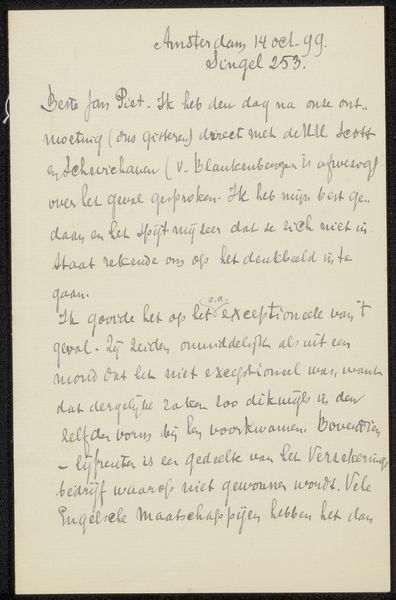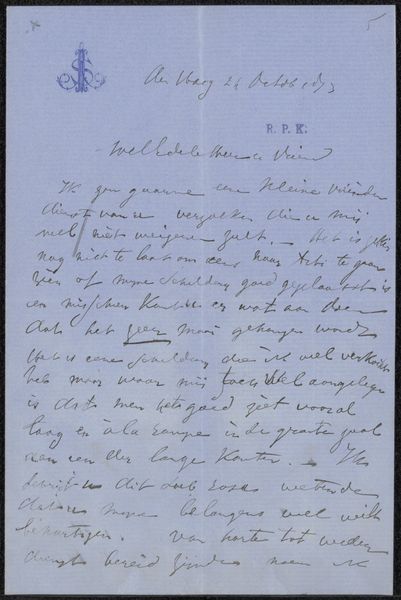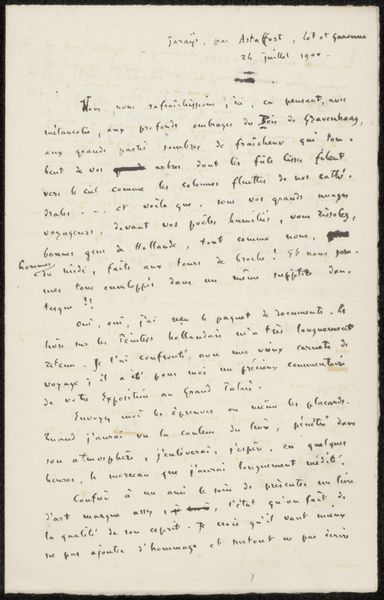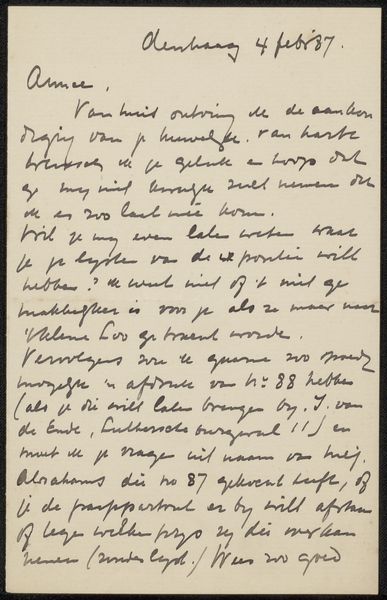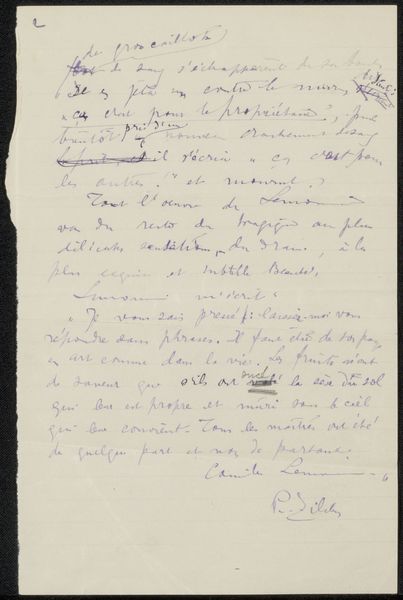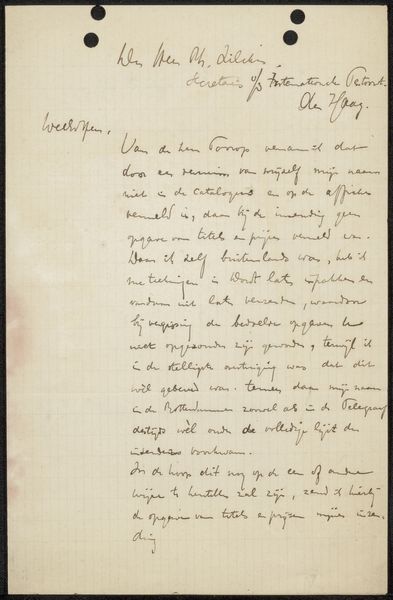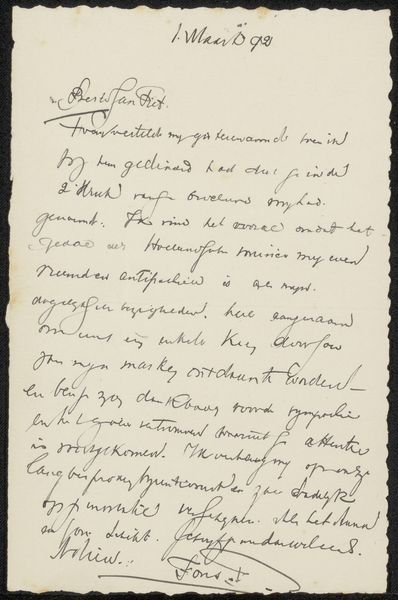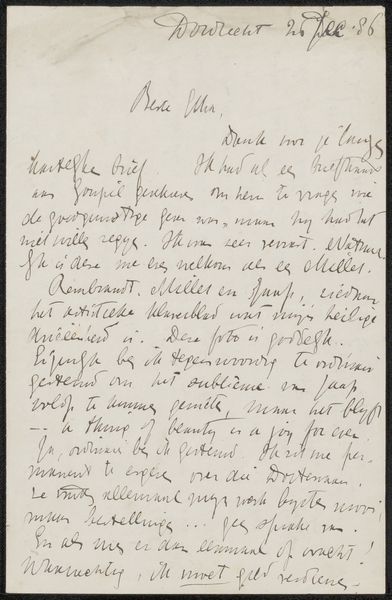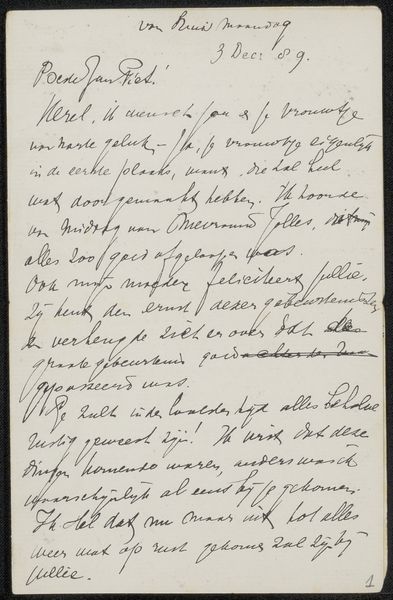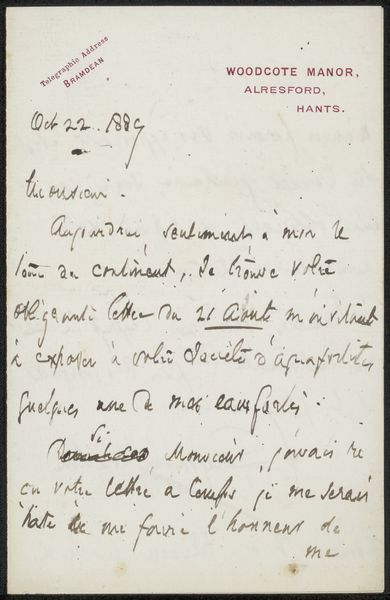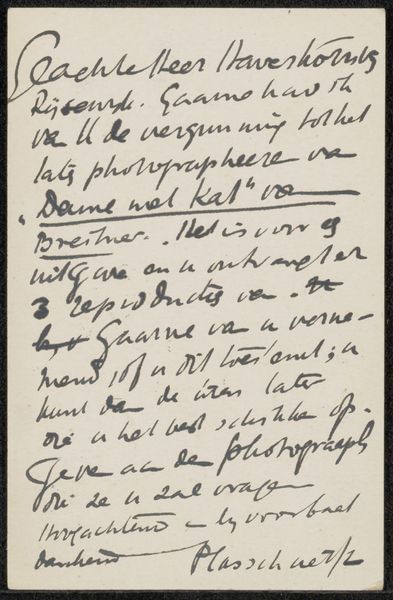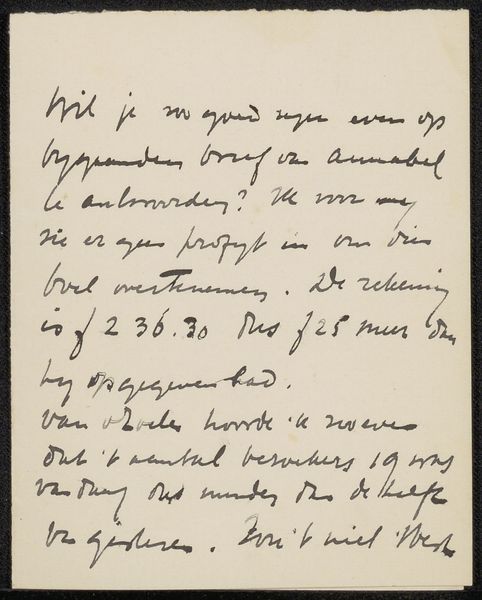
drawing, paper, ink, pen
#
drawing
#
script typography
#
hand-lettering
#
hand drawn type
#
hand lettering
#
paper
#
personal sketchbook
#
ink
#
hand-drawn typeface
#
pen work
#
sketchbook drawing
#
pen
#
handwritten font
#
sketchbook art
#
calligraphy
Copyright: Rijks Museum: Open Domain
Editor: This is "Brief aan Philip Zilcken," believed to be created sometime between 1892 and 1899 by Sir Francis Seymour Haden. It's a pen and ink drawing on paper. It strikes me as very intimate and personal, almost like stumbling upon a private thought. What do you see in this piece? Curator: I see layers of meaning embedded in this seemingly simple letter. Haden’s choice of calligraphy, the deliberate strokes of the pen, transform the words into visual symbols themselves. He's not just conveying information, but imbuing it with emotional weight, wouldn't you agree? Editor: Definitely, the handwriting adds a sense of immediacy and personality that you wouldn't get from typed text. It feels very intentional. What does the *act* of handwriting add to the overall message? Curator: Handwriting, particularly in a letter like this, creates a cultural echo. Consider the Victorian era's emphasis on correspondence as a form of connection, where handwriting was deeply tied to personal identity and social standing. The letter itself becomes an icon, a symbol of a relationship and a specific moment in time. Haden uses the *idea* of letters in the letter. It's so self-referential. Does the choice of the script seem significant? Editor: It does, because the text is about divergence in sympathy, perhaps implying the distance letters create between people but are also meant to close at the same time? Curator: Precisely. It encapsulates a paradox. The letter intends to bridge a gap, but it's born of that very gap. And consider too the receiver – Philip Zilcken - he might not agree with that sympathy! This tension becomes central to its lasting symbolic power, doesn’t it? Editor: I hadn't thought about all those layers! It's much more than just a note; it's a little piece of social and cultural history. Thanks! Curator: My pleasure! Examining such pieces helps us unravel the complex tapestry of human connection across time, revealed through seemingly simple forms.
Comments
No comments
Be the first to comment and join the conversation on the ultimate creative platform.
